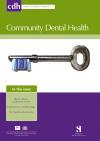Community Dental Health

- Cover Date:
- March 2014
- Print ISSN:
- 0265 539X
- Vol:
- 31
- Issue:
- 1
CDH Mar14 3301-Okawa pp62-64.pdf
Community Dental Health (2014) 31, 62–64 Received 19 September 2013; Accepted 13 November 2013
© BASCD 2014 doi:10.1922/CDH_3301Okawa03
Trends in the geographic distribution of dental clinics in Japan
Aim: In Japan, along with the increase in the number of dentists, the number of dental facilities has continuously increased as well. This study aimed to examine whether the increase in the number of dental clinics in Japan has led to an improvement in their geographic distribution. Methods: We analysed the number of dental clinics and population in all municipalities in Japan as of 2000, 2005 and 2010. We obtained data on the population from the population census and data on the number of dental clinics from the Survey of Medical Institutions. The number of municipalities was 3,258 in 2000 but had dropped to 1,750 by 2010 due to municipal mergers so population and dental data for other years were recalculated based on 2010 municipal boundaries. Lorenz curves and Gini coefficients were used to assess the distribution of dental clinics per 100,000 persons. Results: The mean number of dental clinics per 100,000 persons among all municipalities was 49.9 in 2000, 52.2 in 2005 and 53.4 in 2010. The Gini coefficient for the clinics in the whole country was 0.172 in 2000, 0.164 in 2005 and 0.153 in 2010. Conclusion: The results suggest that the regional inequalities in the availability of dentists have been reduced gradually as the number of dental clinics has increased.
Key words: dental clinic, dentist, population, distribution, geographic location, health policy
- Article Price
- £15.00
- Institution Article Price
- £
- Page Start
- 62
- Page End
- 64
- Authors
- Y. Okawa, S. Hirata
Articles from this issue
- Title
- Pg. Start
- Pg. End
